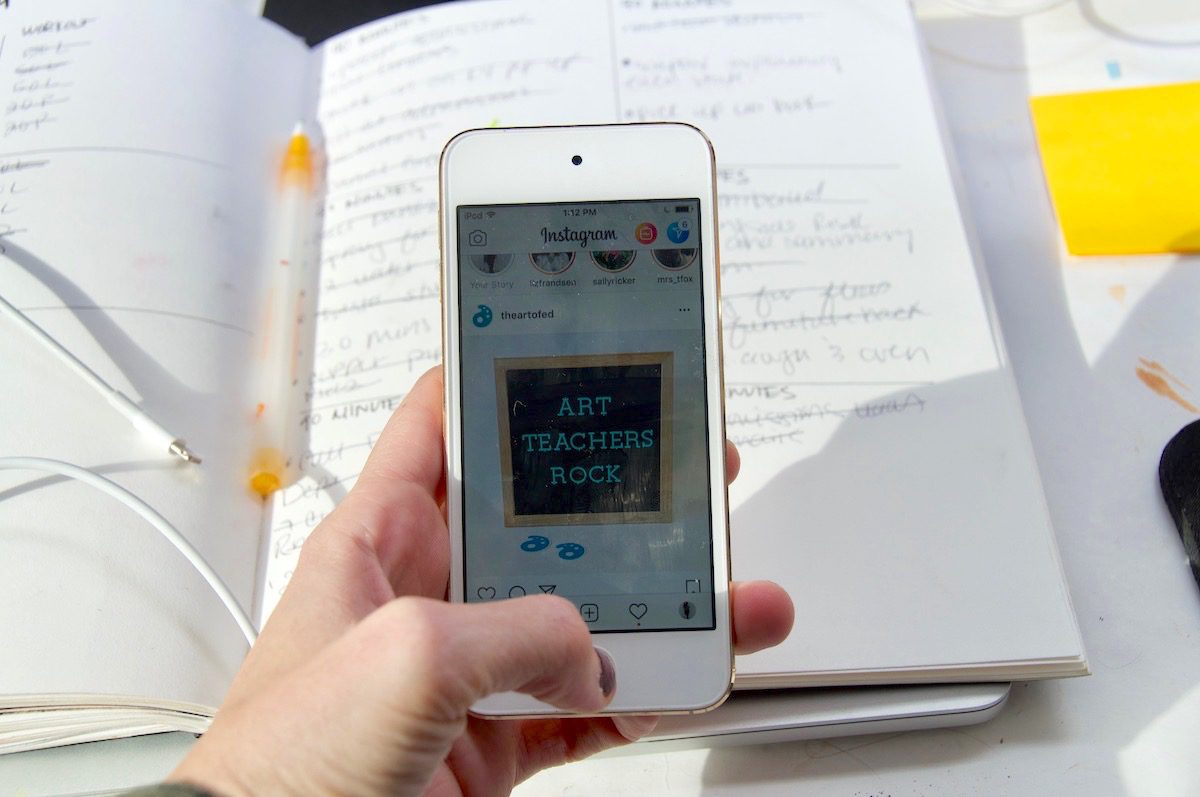Advocacy is an important issue for any art educator. The truth is, many don’t take notice of all of the great things happening in your art program. To get the word out, we host student art shows, hang displays in and outside of the school, and contact the local news to share special honors and activities. All of these traditional forms of advocacy shine a light on the finished work with student creations as the main event.
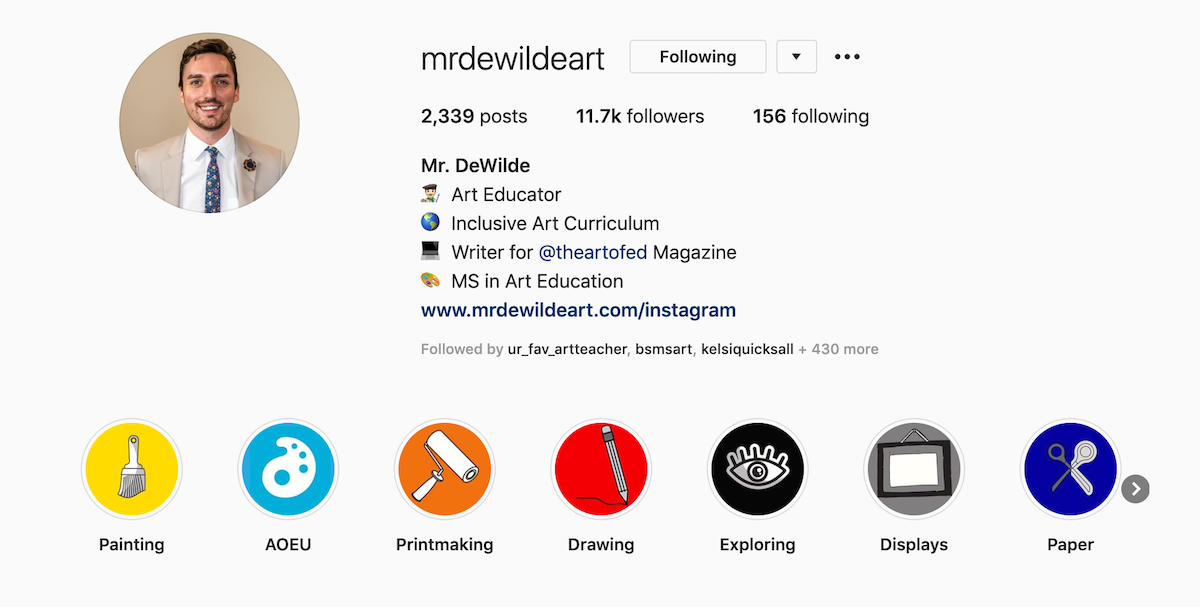
However, art educators know some of the most incredible learning happens long before the artwork is finished. Those aha-moments can come at the beginning of a project when a student is researching and brainstorming their idea. Students also often learn valuable skills when they problem-solve through a mistake. Social media allows you a platform to share all of the learning experiences from start to finish.
Here are 3 ways you can use social media as a powerful tool to advocate for your program:
1. Student Awards
How do you recognize student achievement in your art room? Some art educators present an Artist of the Month, Artist of the Quarter, or another specific recognition throughout the year. You can use social media to promote this kind of pre-established recognition.
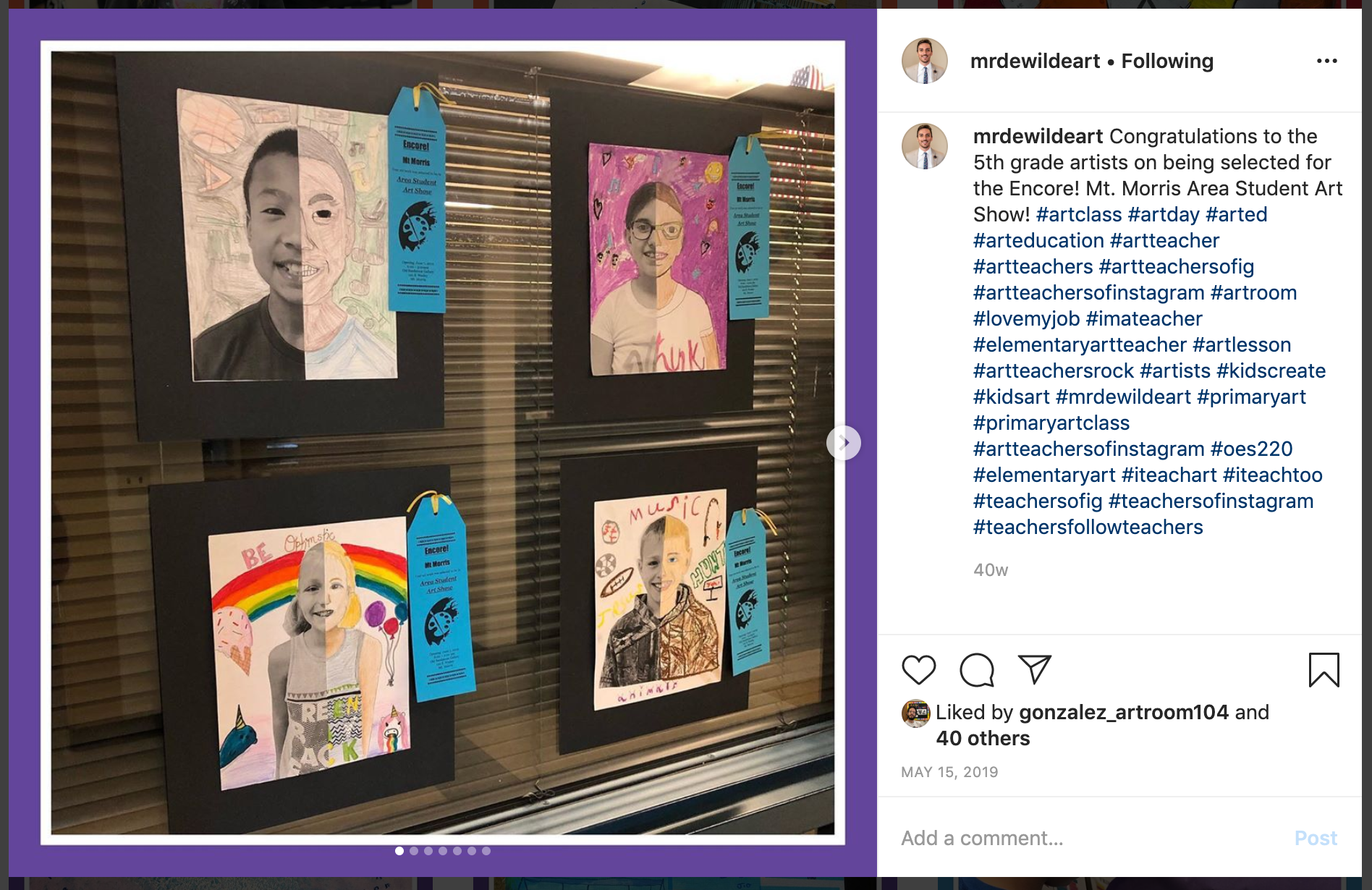
Any type of recognition is a great way to reward your hard-working artists. You are showing the student you recognize their talent and hard work. You may send a note home, or invite the family to a special assembly, but chances are the number of people who get to celebrate this recognition are limited. Social media allows you a chance to really shine a light on that student for all to see.
Upload photos of the student’s artwork and describe the reasons you selected them for this honor. Unlike an awards assembly, on social media, you can display any number of artwork examples. You can go on and on about how wonderful the student is in class. The student’s family can share the post with their extended family who live out of town. This is a great way to recognize the student, but it’s also a great form of advocacy. As likes, comments, and shares pop up on your post, people in the community are taking notice. They see an art educator who cares about their students. They see the fantastic work that reflects your teaching, and they begin to see the value in a strong art program.
2. Youth Art Month
Youth Art Month takes place in March and is administered by the Council for Art Education. Throughout the month, art shows, fundraisers, and school and community activities take place to celebrate visual art education for grades K-12.
This is a great time to advocate for your program! Amp up your social media presence during March to showcase all of the amazing things that happen in your classroom. You can upload daily photos or highlight student work each day and use the hashtag, #YouthArtMonth, to connect with other art educators celebrating their programs.
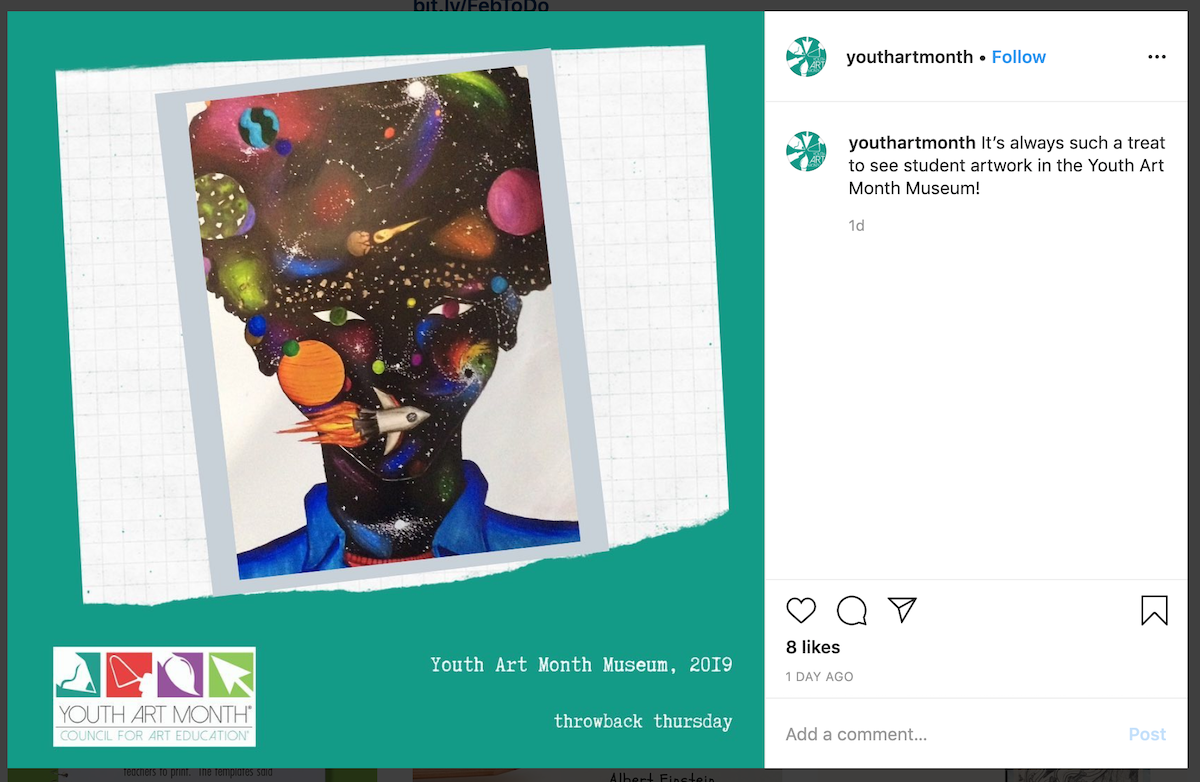
If you’ve already established a Youth Art Month show or event, use social media to promote it! If you’re just starting your own social media presence, find out if your district has an official page. The district may have a social media manager who can share your post to a wider audience in the community.
This is a great opportunity not only to post what’s happening currently in your classroom but also to share some highlights from throughout the school year. That impressive display you put up for an open house? Share it! The student work featured on the school yearbook cover? Post it! Every amazing thing your students do should be celebrated. Your program should shine and not confine those incredible experiences to your art room alone. Youth Art Month is a great opportunity to get the word out.
3. Behind-the-Scenes
Art shows and finished student work often only tell half of the story. The steps along the way are just as impressive, and often even more important. Social media allows you an opportunity to pull back the curtain and show those in your community what each step of the creative process looks like.
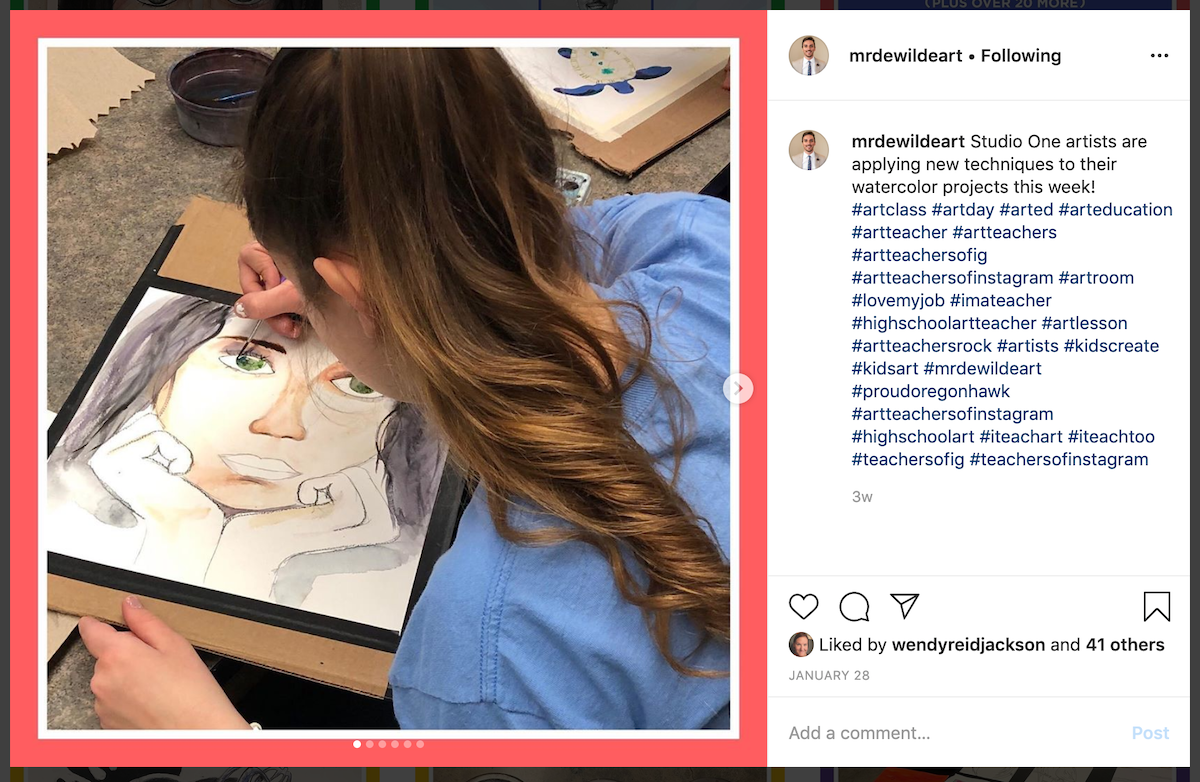
Your students will know the many steps along the way to completing a finished ceramic piece, but others in the community probably don’t realize all the work that goes into it. Share images of students sketching, planning, kneading, rolling, hand-building, wheel-throwing, glazing, etc. A finished work of art can be impressive, but it may be even more appreciated when others know how it was created.
Beyond students’ family and friends, social media can reach others in the community and those who have considerable influence on your program. Administrators and school board members aren’t often in your classroom to witness every learning experience. By posting frequently to social media, you can provide a stronger representation of your curriculum, teaching, and classroom learning environment.
Final Thoughts
Traditional forms of advocacy are still useful to your art program. However, you can add social media as a tool to reach a larger audience more frequently. You probably already use social media in your personal life, so you already know how to access and use the different platforms with ease. Use it to your advantage! Get the word out that art is making a meaningful impact in the lives of your students. They are constantly learning new skills as they navigate through the creative process. With each post, you share another reason why your program is valuable to the school and community.
Social media can be a great tool to incorporate with your teaching for a variety of reasons. Advocacy is just one of the great ways you can utilize social media as an art educator! Check out last month’s article, “3 Reasons Why You Should Share Your Art Curriculum,” for more ideas on why and how you should utilize social media in your classroom.
How do you advocate for your art program?
Do you use social media to share student work?
How are you planning to celebrate Youth Art Month?
Magazine articles and podcasts are opinions of professional education contributors and do not necessarily represent the position of the Art of Education University (AOEU) or its academic offerings. Contributors use terms in the way they are most often talked about in the scope of their educational experiences.
